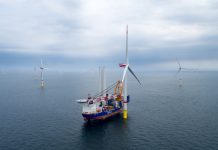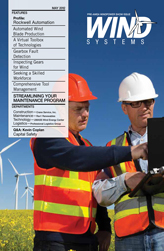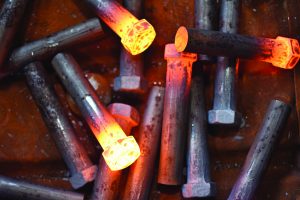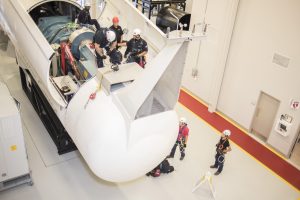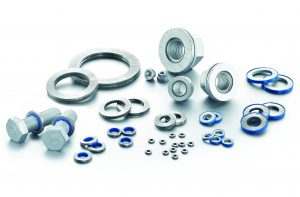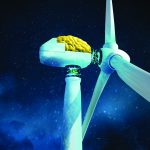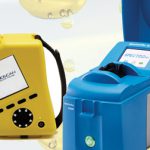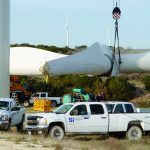Originally known as the Compression Rheostat Company—and launched with an investment of $1,000 by Lynde Bradley and Stanton Allen in 1903—Rockwell Automation has been designing and manufacturing industrial controls and electrical components for more than a century. Along the way it has developed an approach to working with its clients that is particularly fitting for a technology-driven industry such as wind energy.
“We are primarily focused on working closely with OEMs to develop components and systems that complement and integrate with their own designs,” according to Damon Sepe, OEM business development manager for North America, “and we’re able to provide engineering services to whatever degree is necessary in order to help our customers achieve their goals.”
The Engineered Solutions Business (ESB) within Rockwell Automation makes engineers in many specialties available to work with OEMs in developing solutions to the challenges they face. “Once the OEM team has established contact with a new client, it’s our job to work up a proposal based on their specific needs,” says Steve Hessefort, ESB business unit manager. “That might be an electrical panel that controls the integrated architecture within a wind turbine or some other piece of critical hardware, but we’re prepared to work directly from their plans or develop our own, whatever their requirements may be.”
Once a design has been approved by the customer and the order placed, that’s when Milan Jovanovic’s work begins. As a project manager within the ESB group, he describes himself as “a traffic director,” coordinating the activities of different players involved in the project. “It’s my job to basically act as a coordinator between our development engineers, our salespeople, the customer, and our different manufacturing areas to make sure that the project gets done on time and at the right cost levels,” he says. “I’m more or less the single point of contact for any of those groups in terms of trying to answer questions as they arise and make sure the project moves along smoothly.”
Of particular importance is the concept of repeatability, according to Sarah Larson, commercial program manager for ESB. “We have teams of marketing and sales professionals who are assigned to work directly with OEMs in different market sectors, such as wind,” she explains. “If a turbine manufacturer is in need of a control panel solution, for instance, sales will initiate the contact and our engineers will design a customized panel solution that is repeatable, in that it can be manufactured at one of our facilities located nearest the point of end use.”
With new turbine designs constantly being introduced—and with so many leading-edge concepts being developed in the more-mature European wind market—keeping a finger on the pulse of the industry is important. That’s where Dave Schaetz comes in. As a global industry technical consultant in the power and energy industries, he plays a number of different roles that result in Rockwell Automation systems being incorporated in current designs while being aware of upcoming trends as well. “On one hand I’m constantly seeking areas that may represent a new market for us, as was the case with wind some years ago,” he says. “I learn all I can about the equipment and manufacturing processes involved to see where our existing products might fit, or could be customized to do so. Then I will play a more technical role in terms of setting up training and helping our customers incorporate our products into the equipment they’re building.”
This level of engagement is embraced by everyone at Rockwell Automation, especially as it increasingly becomes a knowledge resource for the wind industry. By deploying its global technical consultants to work with clients around the world—and engaging in R&D work with both industry and academia—the company provides technology transfer between market platforms: harnessing lessons learned in other forms of energy production to the benefit of the wind industry, for instance. And with a commitment to providing user-friendly solutions, the resulting equipment control solutions are scalable and “plug and play” enabled, using “off the shelf” components that are easy to program and are both reliable and proven. Whether its customers are in need of main turbine controls, pitch and yaw systems, panel fabrication, and even complete wind farm management and control solutions, Rockwell Automation can provide whatever level of service involvement and engineering assistance is required, and its full-service test facility is available for design prove-out as well.
“I think the word that really sums up our approach to market is flexibility,” Sepe says. “We have a very close relationship with our customers, using WebEx and Pro/Engineer to collaborate during design, so we’re poised to respond immediately to their concerns at any point in the process. We’re here to assist our customers all the way from concept to commissioning.”
For more information:
Go online to www.rockwellautomation.com.


















